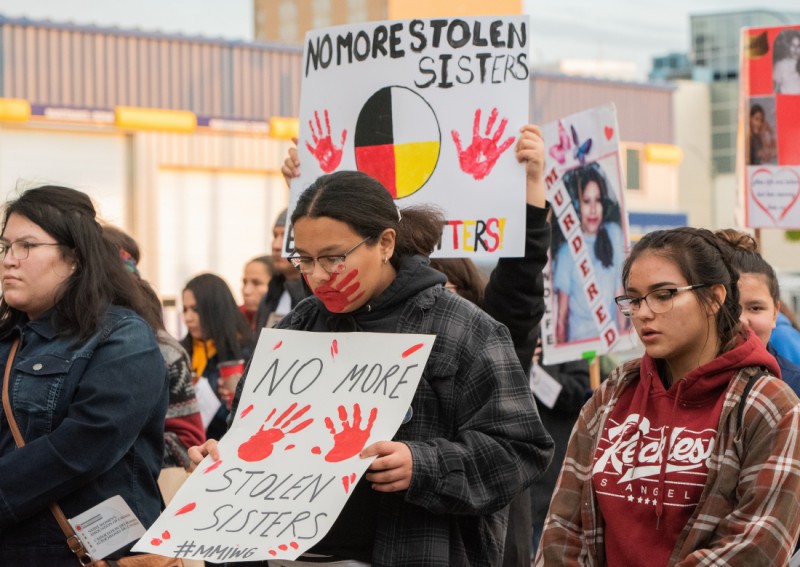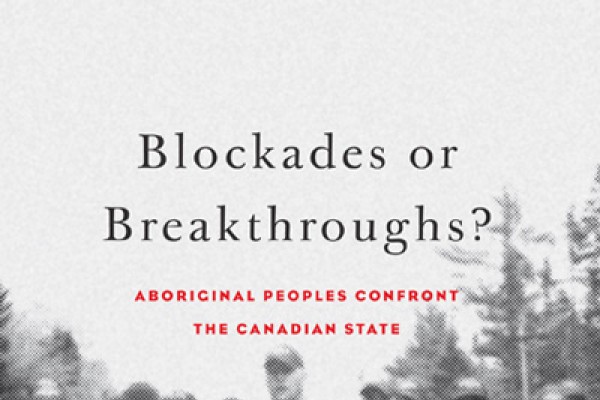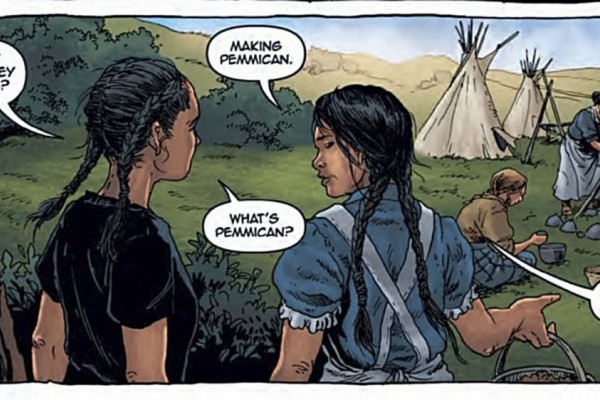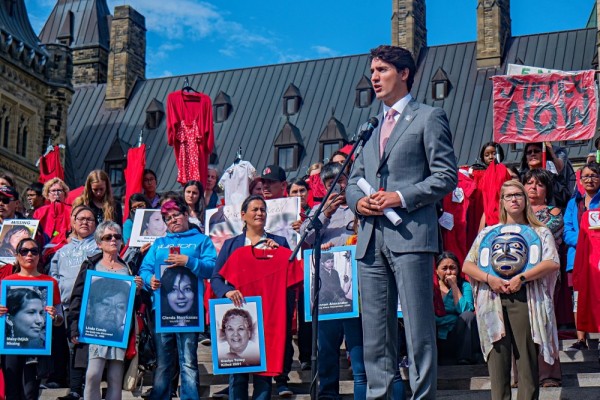Canada is ignoring the gendered impacts of COVID-19 on Indigenous women

Supporters and mourners walk together in the streets of downtown Saskatoon, SK during the Sisters in Spirit Vigil & March, October 6, 2019. Photo by Victoria Becker/The Sheaf.
Canada is in a crisis of epic proportions. Both Canadian and Indigenous governments are currently responding to the coronavirus pandemic in an effort to prevent the spread of the virus and save lives. However, Canada was already in a nationwide crisis before COVID-19 turned into a global health emergency.
In June 2019, the National Inquiry into Murdered and Missing Indigenous Women and Girls final report found Canada guilty of both historic and ongoing genocide against Indigenous peoples generally, and Indigenous women and girls specifically. The National Inquiry found that Canada’s colonial structures which targeted Indigenous women and girls, leads directly to their current rates of violence, death and suicide. Canada’s subsequent failure to take urgent steps to end genocide now puts Indigenous women and girls at higher risk of infection and death in this pandemic.
To date, federal and provincial governments have offered very few details about their pandemic measures, aside from daily updates on COVID-19 numbers and their health advice—avoid non-essential travel; practice social and physical distancing; self-isolation and monitoring for symptoms; and proper hygiene (washing hands).
Canada’s Minister of Indigenous Services Marc Miller today announced that $305 million has been approved for Indigenous-specific funding, including $215 million for First Nations, $45 million for Inuit, $30 million for Métis and $15 million for urban and Indigenous organizations. No funding was announced to specifically address the gendered impacts of this pandemic on Indigenous women, nor was there any funding allocated to simultaneously address the ongoing genocide crisis. This omission is part of a long-standing series of omissions by Canada to ensure Indigenous women and girls enjoy basic human rights protections from abuse, exploitation, violence and death.
Indigenous peoples are an especially vulnerable group in Canada, due to centuries of genocidal laws and policies that have created and maintained severe socio-economic conditions in Indigenous families, communities and Nations. Staggering rates of poverty are one of the primary root causes of Indigenous peoples’ premature death rates by upwards of 15 years earlier than non-Indigenous Canadians. Indigenous peoples suffer from disease rates four times the national average; unintentional injuries at rates three and a half times higher; and infant mortality rates that are three times higher. Indigenous girls have the highest rates of mortality in Canada—more than six times the national average. Nationally, 47 percent of First Nations children live in poverty, and in provinces like Manitoba, that rate jumps to 76 percent and continues to increase. Within these statistics are the often overlooked facts that the poverty of these children are directly related to the poverty of their mothers—Indigenous women—many of whom are single parents.
The statistics paint a bleak picture for Indigenous women and girls. Indigenous women have higher rates of suicide attempts overall and those who have had their children taken into foster care have significantly higher suicide attempts and completions. Add to this the fact that despite being only four percent of the Canadian female population, they represent at least 25 percent of female murder victims. They are the number one target of human traffickers and serial killers, as well other segments of society. Indigenous women and girls have been regularly targeted for sexualized violence by police officers and have suffered from physical and sexual abuse in state institutions like residential schools, Indian hospitals and prisons for decades. Indigenous women represent 42 percent of the federal prison population and are the fastest growing prison population overall. Indigenous girls represent 60 percent of youth in corrections, but in provinces like Saskatchewan, those numbers can be as as high as 85 percent. We also know from the statistics, that 91 percent of Indigenous women and girls in prisons have suffered physical or sexual abuse.
Every level of government and state agency in Canada has had a hand in creating and maintaining the worst socio-economic conditions for Indigenous peoples, especially Indigenous women and girls. Their continued failures to address ongoing genocide puts Indigenous women and girls at higher risk for infection and death from COVID-19. Indigenous women and girls in prisons and youth corrections are literally trapped in institutions well-known for overcrowding, unsanitary conditions and a critical lack of access to healthcare. Add to this the number of Indigenous girls over-represented in the foster care system living in group homes, travelling back and forth between youth corrections and foster homes or living on the streets, and we see a recipe for disaster. Indigenous women are also overrepresented in the homeless population. COVID-19 has already hit the homeless and prisons. If we do not act now, we could see far higher rates of infection and death in Indigenous women and girls than during previous pandemics.
During the H1N1 pandemic, Indigenous peoples were only 4 percent of the population but represented 28 percent of hospital admissions and 18 percent of the deaths. Indigenous women are far more likely to be the caretakers of children, elderly parents and extended family members. For those in the work force, they are more likely to be working in helping professions—like health care, social work and education—placing them in direct contact with people and increasing their risks of infection.
Canada’s pandemic response must include a gendered lens that not only develops emergency measures for Indigenous peoples developed in partnership with Indigenous governments, but it must include a plan to address the specific vulnerabilities of Indigenous women and girls, done in partnership with Indigenous women.
Federal and provincial governments need to work urgently with Indigenous women’s organizations and experts to develop a gendered plan, one that includes significant targeted funding across a wide array of social supports, to address their specific vulnerabilities.
Indigenous women and girls need a comprehensive plan that includes:
- A targeted decarceration plan with corresponding post-release supports;
- An infusion of emergency funding for child welfare agencies dealing with Indigenous children in care and the added supports and protections these children and their families will need to stay health and connected;
- Funding and infrastructure to maintain and expand emergency domestic abuse and rape crisis shelters so that Indigenous women and girls will not be trapped by the virus into staying in dangerous situations;
- Targeted housing on and off reserve for Indigenous women and children to keep them off the streets away from the virus;
- Expedited Indian registration for children who are newly entitled to registration under Bill S-3 so that they can access critical uninsured health benefits;
- Safe childcare spots for Indigenous women who work on the frontlines of the pandemic, including in social work, nurses, medical supports, retail, and janitorial, etc;
- Basic income allowance for Indigenous women caring for children, elderly parents and/or extended family members;
- Emergency support payments to allow Indigenous women to buy sufficient food, water and medical supplies during this period of self-isolation; and
- The immediate removal of all man-camps located at or near Indigenous communities to reduce the rates of violence and the risks of infections from mass gatherings of workers.
While this is by no means a comprehensive pandemic plan, it is critical for governments at all levels to turn their minds to the ways in which Indigenous women and girls require targeted supports. If the current federal budget represents the extent of their Indigenous pandemic measures, then we have serious cause for concern. In the current crisis context of ongoing genocide against Indigenous women and girls, it is critically urgent to develop a gendered pandemic plan now.
Pam Palmater is a Mi’kmaw citizen and member of the Eel River Bar First Nation in northern New Brunswick. She is a longtime CD columnist, and has been a practicing lawyer for 20 years. Currently, Pam is a Professor and the Chair in Indigenous Governance at Ryerson University.










